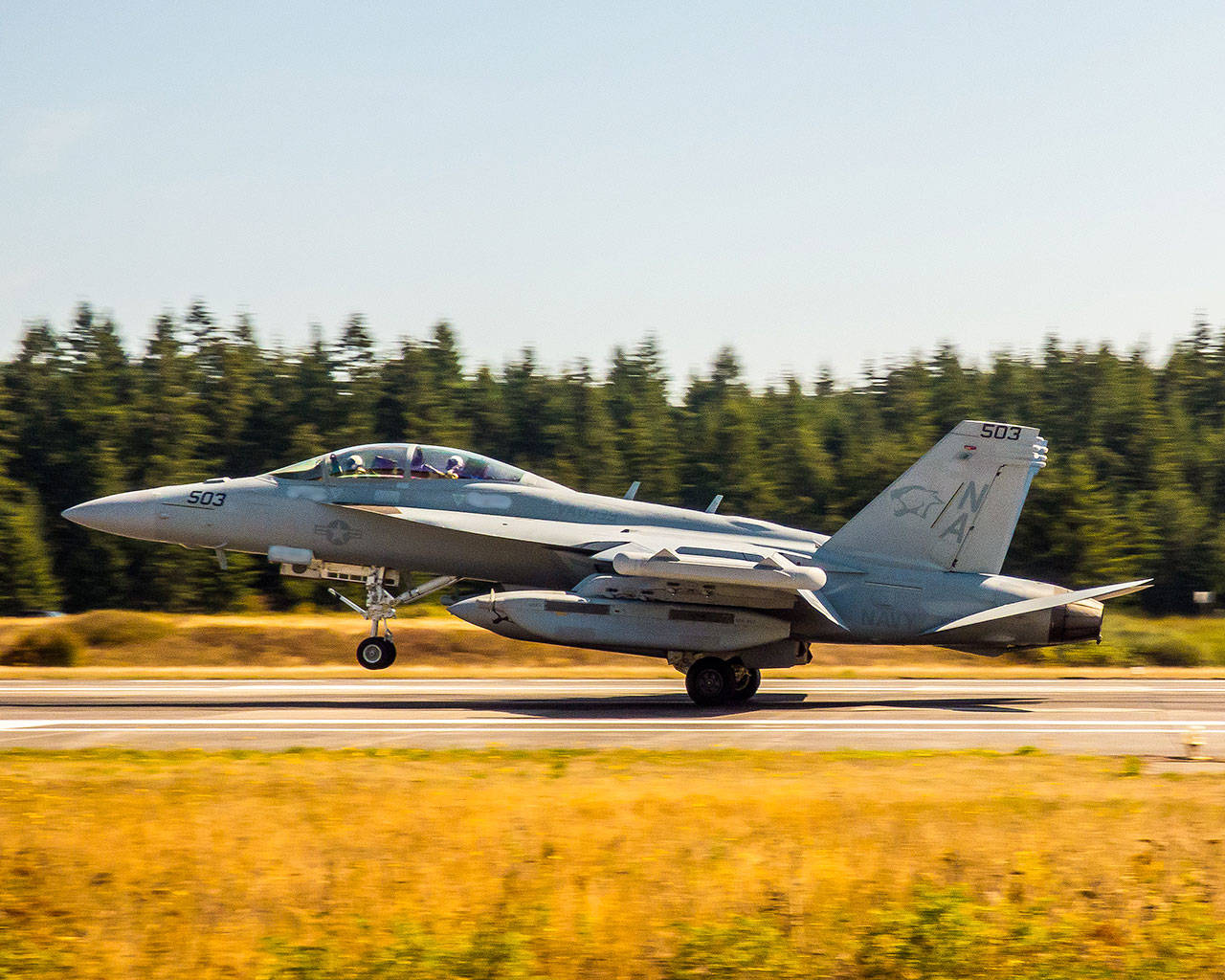COUPEVILLE — The Navy this week announced a “preferred alternative” plan for increased landing practice by electronic-warfare jets at a rural airfield surrounded by farmland and homes.
The amount of activity at what’s known as Outlying Field near Coupeville, where Navy jets practice simulated aircraft carrier landings and takeoffs, would be a four-fold increase over current activity.
About 12,000 “touch-and-go” landings and takeoffs by EA-18G Growlers would occur annually at Outlying Field, the Navy said. Currently, about 3,000 such operations occur there. The field is about 10 miles south of Ault Field at Naval Air Station Whidbey Island, the jets’ base of operations.
Navy officials say that the preferred alternative places most of the landing practice near Coupeville because the airfield provides the most realistic training, replicating the pattern of landing on an aircraft carrier.
“The low cultural lighting around Coupeville and the ability to completely darken the field also closely resembles at-sea conditions from the pilots’ perspective,” the Navy said in a statement.
While the Navy announced on Monday the preferred alternative plan for Growler practice, a final environmental impact statement will not be completed until later this summer or in the fall. The secretary of the Navy or his representative will make the final decision.
Growlers are variants of the F/A-18F Super Hornet equipped to conduct electronic warfare.
Island County Commissioner Helen Price Johnson said she’s thankful the Navy informed the community about the preferred alternative decision now. It gives the community a chance to prepare.
“It’s not a surprise but it will be very impactful,” she said of the increase in Growler practice.
Leaders of Whidbey Island groups opposed to the noise from Growler practice were not happy and said Navy officials didn’t take into account the concerns of the community.
“Clearly, the Navy has lost touch with the people that they serve,” said Maryon Attwood of Citizens of Ebey’s Reserve. “Their linear chain-of-command thinking demonstrates the Navy’s lack of originality or willingness to find a livable solution for communities they continually say they appreciate as good neighbors. Their preferred option reflects the attitude of the bully they have become — not of the sympathetic neighbor they espouse to be.”
Coupeville Community Allies asserts that Growler practice will have a “profound and negative effect” on the economy of central Whidbey Island.
“If this proposal comes to pass, we would have to sacrifice our economy for our safety — a terrible bargain to have to make in any community,” according to a statement from Coupeville Community Allies.
The Navy received more than 4,000 comments from the public after a draft environmental impact statement was published. After the final EIS is released, the public will have another chance to comment during a period of at least 30 days.
The preferred alternative plan establishes two new squadrons at the air station and adds two aircraft to squadrons that operate off aircraft carriers. That’s an increase of 36 Growlers at Whidbey. There are 82 Growlers based there now.
The Navy now proposes less airfield activity than original projections because of a reduction in the number of pilots and a change in the training requirement, the Navy said.
About 80 percent of the landing practice would be at Outlying Field near Coupeville. The rest would occur at Ault Field at the main base. Navy officials point out that Ault Field still will see four times the number of aircraft operations as the practice field near Coupeville. A lot of aircraft activity at the base involves aircraft other than Growlers.
The preferred alternative would bring 630 Navy personnel and 860 family members to the island and Skagit County, according to Lisa Padgett, environmental engineer for U.S. Fleet Forces Command.
NAS Whidbey spokesman Mike Welding points out that the population increase will be offset by the decommissioning of an air reconnaissance squadron. Officials project that the base population will increase from 8,400 people to 8,600, he said.
If the alternative is adopted, the transition will begin in 2019 and be completed in 2022, according to Fleet Forces Public Affairs Officer Ted Brown.
Talk to us
> Give us your news tips.
> Send us a letter to the editor.
> More Herald contact information.

























